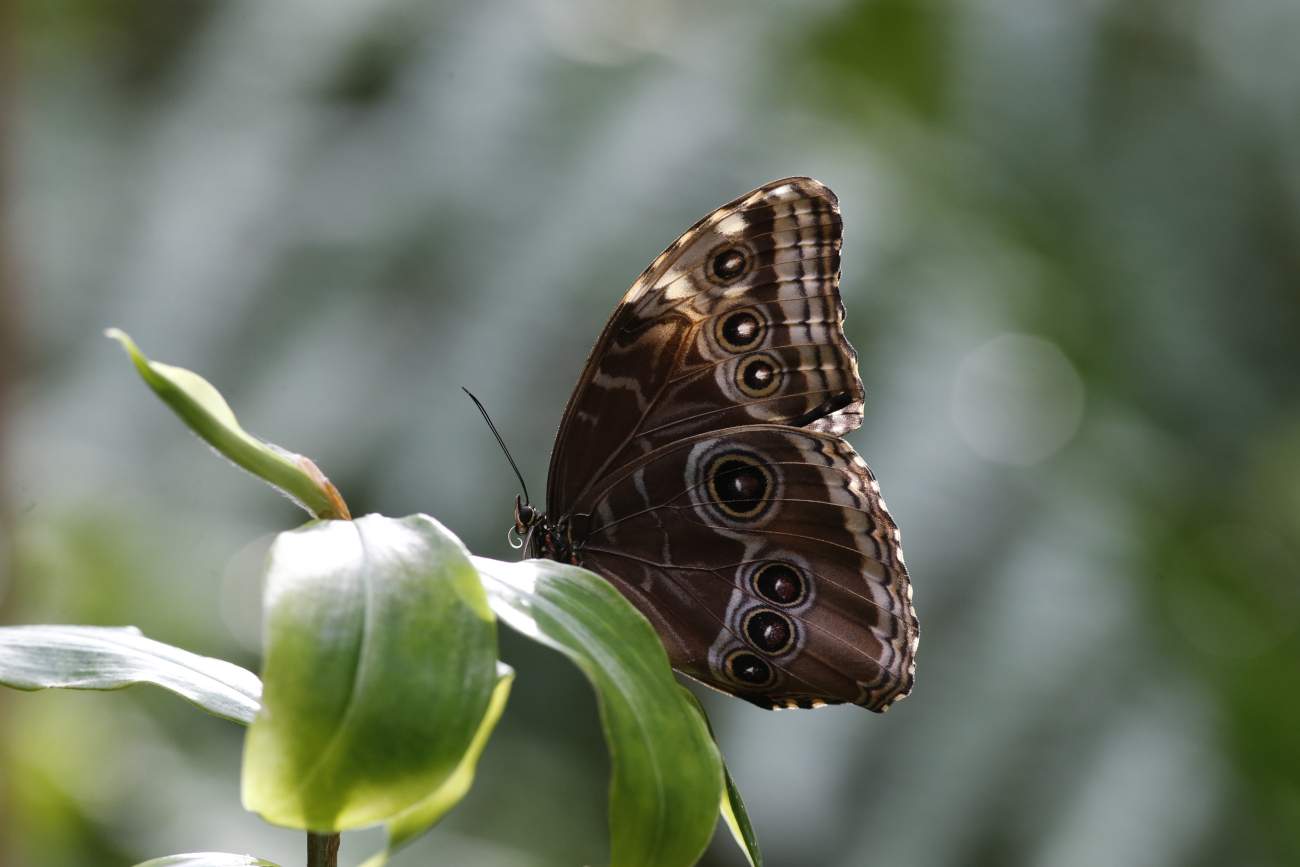From March 26 to May 19, 2024, the tropical greenhouse at Trento’s MUSE will host more than thirty species of tropical butterflies, colorful, graceful, and fascinating, but also a symbol of transformation and fragility. The Butterfly Forest initiative has already been hosted at the museum in 2017 and 2018 with considerable success and appreciation from the public. As of mid-March, more than 1,000 specimens have arrived at the museum, which, properly prepared, will flicker to the adult stage inside the greenhouse.
They will be housed in a special “nursery,” an incubator where it will be possible to observe the chrysalis hatching event. In this protected space, the chrysalises will regain the strength necessary for their first flight to the tropical vegetation of the greenhouse, where, among the more than 200 botanical species present, they will find dozens of flowering plants, such as Pentas and Streptocarpus, ready to provide them with sustenance. So-called “Butterfly Bars,” colorful structures containing ripe fruit useful for their nourishment, have also been placed in the greenhouse.
The butterflies will find in the MUSE greenhouse an environment perfectly suited to their needs: ahigh temperature day and night (between 26 and 34 °C) and avery high relativehumidity of the air (about 80 percent), the latter being strictly necessary for flickering, that is, to allow the butterfly to emerge from the chrysalis and spread and dry its wings.
“The tropical greenhouse at MUSE Trent,” says Patrizia Famà, director of the Office of Public Programs, “is a unique habitat for rare and exotic plant life, which in turn is a source of nourishment for numerous species of insects and birds. Celebrating spring with The Forest of Butterflies means recognizing the value of the more than 150 thousand determined species of lepidoptera. Butterflies, both beautiful and fragile, are effective pollinators and are food for other organisms, such as birds. For us, important sentinels on the health of natural habitats. With this exhibit, MUSE not only shows the unique aesthetic value of nature but also provides an opportunity to travel through a healthy biosystem that is now increasingly rare.”
The tropical butterfly farms from which MUSE buys chrysalises represent an activity with a positive impact on territories and populations. Raising and trading butterflies can provide a source of employment and income accessible to anyone. This practice prevents others with higher environmental impacts such as cultivation, livestock farming and deforestation. In addition to providing an alternative source of livelihood to the timber industry, raising butterflies also means preserving local flora and encouraging the conversion of degraded land back to native forest. This is because the reared species grow exclusively on wild plants. The morpho-blue butterflies and other species come from Costa Rica, thanks to Francesco Barbieri ’s collaboration with AMEAP (Asociación de Mujeres Ecológicas y Artesanas del Porvenir), an association made up of women who have been raising butterflies for years in a small community located in the north of the country. The chrysalises arrive in thermally insulated packages after three to five days of travel. The butterfly copes with the transport without problems because it travels when it is chrysalis, the stage when it does not need to move or feed and which lasts, depending on the species, from 9 to 20 days.
The Forest of Butterflies exhibit was made possible thanks to the advice of Francesco Barbieri, biologist and scientific director of the Butterfly House in Bordano (UD), and will be an opportunity for two highlights: Friday, April 5, there will be a dialogue between Francesco Barbieri and Silvia Ricci, coordinator of the Mazingira Association: they will talk about their experiences in Tanzania and Costa Rica, getting to the heart of their projects, between butterfly breeding and ecotourism, respecting environmental and social sustainability. On Saturday, April 6, biologist Francesco Barbieri and museum staff will be on hand to answer questions and curiosity about the butterflies in the greenhouse.
 |
| At Trento's MUSE, the Butterfly Forest: home to more than thirty species of tropical butterflies |
Warning: the translation into English of the original Italian article was created using automatic tools. We undertake to review all articles, but we do not guarantee the total absence of inaccuracies in the translation due to the program. You can find the original by clicking on the ITA button. If you find any mistake,please contact us.